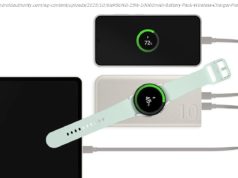The ongoing debate between Apple and Samsung might never be settled—some people prefer iPhone handsets and iOS, others are big time fans of Galaxy devices and Android. Each side has their pros and cons, though if you purchased a Galaxy Note 8 and are looking for bragging…
The ongoing debate between Apple and Samsung might never be settled—some people prefer iPhone handsets and iOS, others are big time fans of Galaxy devices and Android. Each side has their pros and cons, though if you purchased a Galaxy Note 8 and are looking for bragging rights over the iPhone 8, you can point to durability. After putting both hands through a series of drop tests, the folks at PhoneBuff found Samsung’s handset to be the tougher of the two…barely. What makes this face off interesting is that both the iPhone 8 and Galaxy Note 8 are using an all-glass back design. Samsung has actually been using glass backs for quite some time now, while Apple introduced it as a highly touted feature of the iPhone 8 and iPhone 8 Plus (and iPhone X)—it is the first time since 2011 that Apple has gone with an all-glass design, and this current implementation is supposedly the bees-knees. Or in Apple-speak, it is using “the most durable glass ever in a smartphone, front and back.”That is a bold claim, but how does it hold up to the competition? The iPhone 8 is a tough cookie. However, it is not quite as tough as the Galaxy Note 8. Both devices survived a drop test onto a slab of concrete, with the backside landing first. The phones functioned just fine afterward, though the glass back on both handsets was noticeably cracked—the Galaxy Note 8’s damage looked a little more severe, particularly in the upper corner, while the iPhone 8 had more cracks overall. This was followed up by a corner-drop test, which in previous generations might have resulted in the entire phone being cracked. In this case, both handsets performed surprisingly well, with minimal damage on the corners that took the brunt of the drop test. And other than some minor scuffing, both phones still functioned properly. Where the Galaxy Note 8 started to distance itself from the iPhone 8 was when dropping the handsets face-first. Both phones sustained damage, but it was far less prominent on the Galaxy Note 8, which was able to contain the damage to the corners. On the iPhone 8, more of the main display was cracked. While both phones were still functional, the iPhone 8 presented the higher risk of injury to finger cuts. The final drop test consisted of raising the height and letting the phones plummet onto a piece of steel, and then repeating the test through 10 rounds. This is where the Galaxy Note 8 was really able to claim victory. As you might imagine, both phones took a beating here. However, chunks of the iPhone 8 actually flew off the device after a few drop tests. And after eight drops, the iPhone 8 no longer functioned properly, whereas the Galaxy Note 8 survived all 10 drops. So what’s the takeaway here? Well, buy yourself a case for your handset. Beyond that, Galaxy Note 8 owners can enjoy a small amount of bragging rights over iPhone 8 owners in terms of durability. In all fairness to Apple (and iPhone fans), the iPhone 8 actually performed fairly well overall. However, the device’s glass is certainly not immune from cracking, hence why a display replacement will still run customers $29 and glass back $99 on Apple’s AppleCare+ program.






